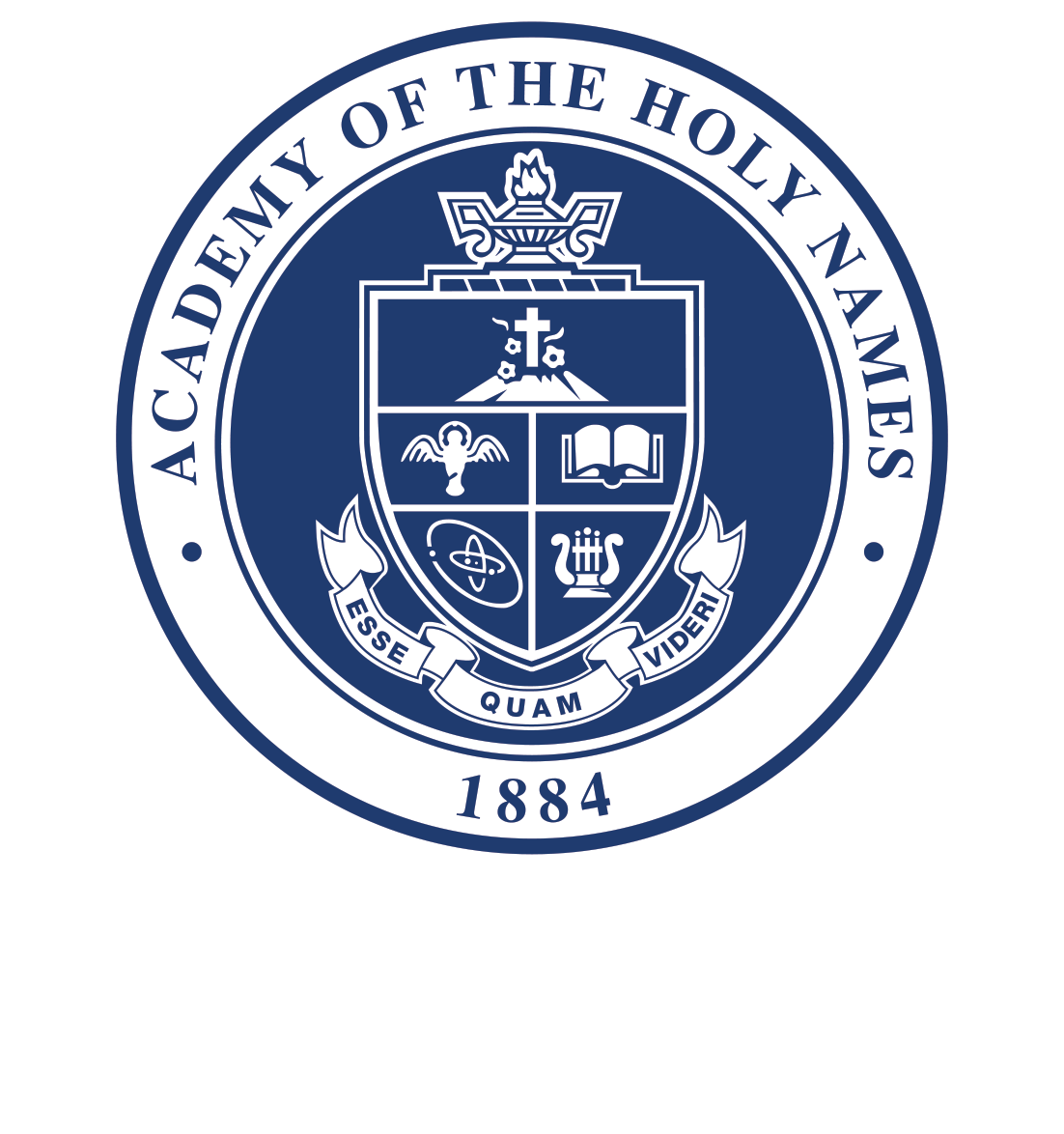2/17/2023
David Perritano
She’s a little bit biology. He’s a little bit physics.
They’re Debbie and Matt Baxter, the dynamic mother-son duo in the Holy Names science department. She teaches AP Biology and Biology. He teaches Earth Science, Physics, and AP Computer Science.
“Technically I have been here longer than you might expect,” says Matt, who has been a teacher at AHN for six years, “by helping my mother set up her room over the summer as a child!”
It’s been a bit longer for mom Debbie, who is in year 31.
“I always wanted to be a teacher from when I was really young,” Debbie says. “I was always the teacher when I ‘played school’ in the summer with the kids in the neighborhood. I was older than most of them and I would hold pretend classes in my backyard for about six or seven kids. They were all in different age groups. I made up assignments for them to do in math and other simple areas. I would even give them report cards.”
Math came easy to Debbie in school, but it was science she always found “super fun and interesting.” She especially loved biology. “I loved learning about how my body worked and why. I thought that everyone should understand their own body and how it works.”
She says the science bug runs in the family. Her husband is an “IT guy.” Her daughter is a pediatrician. For Matt, who’s a fan of all sorts of sciences, especially computer science, he was convinced he’d be a researcher.
“I quite enjoyed working as a teaching assistant and the professor I worked with thought I would be a good teacher. This would eventually be my inspiration to consider the realm of education.”
Debbie says her son was always a serious student who wanted to do well. As a son, she says, he’s caring, thoughtful, and empathetic: a combination of elements which would serve him well in academia.
“I think Matt is one of the most patient and generous teachers I know,” Debbie says. “He always thinks the best of his students. He gives them the benefit of the doubt. He has endless patience, and he offers extra help at night and on weekends frequently. This shows his endless dedication to his students.”
The feeling is mutual.
“She (Debbie) is a very passionate teacher, caring deeply about her subject area and about helping to grow her students into the best person they can be.”
Each hopes their students leave their classrooms with more than they came with, especially when it comes to deduction and reasoning.
“I hope after taking my class, my students can look at how they changed over the course of the year as a student and they see the growth in themselves that I see in them,” Debbie says. I hope they realize they are better students when they learn slowly and carefully and do not cram information into their heads, but that learning comes when they methodically learn the processes in biology and when they work to understand what is happening.”
Matt adds, “It is my goal for students to develop an appreciation for the content areas I teach, but I know not everyone is going to fall in love with rocks or motion equations. At the very least, I strive to ensure all students further develop their scientific and critical thinking skills.”
All this experimentation, innovation, and molding of young minds does come with its perks.
“It is really fun working with Matt,” Debbie says. “I think he has a great sense of humor, and he often tries to make me smile during the day here at work – especially if it has been a long day. Not to mention that he sometimes brings me a cookie!”
Both also find value in educating in a more intimate, private school setting.
“With our smaller class sizes, we can better help each student to succeed,” Matt says.
“The personal connections here make all the difference,” Debbie adds. “Students are given every opportunity to get the help that they need to be successful in all areas. They are given personal guidance in an outstanding advisor program where lifelong connections are built with another adult. A major difference that I see in the teaching is that I get to teach. My students give me the freedom to teach my subject. Most of them truly want to learn and want to be better students. Students and faculty partner together to make learning happen.”

